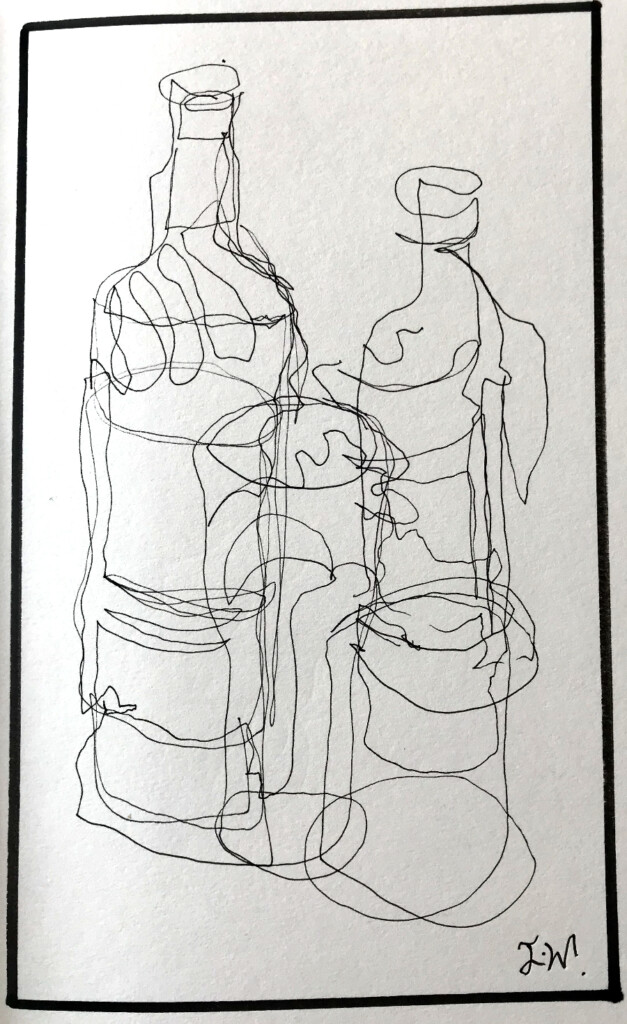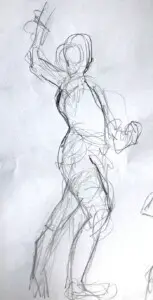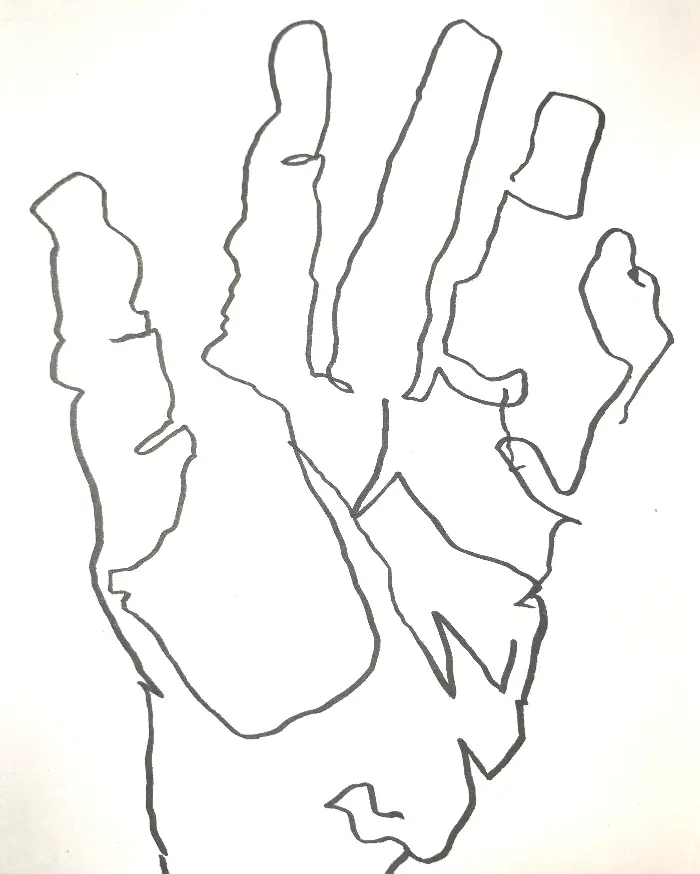One of the most unique experiences you can have is using your visual senses to create a blind contour. Yet, if you want to know how you draw a blind contour, this information-packed guide gives you plenty of instructional tips. Let's get started!
As a general rule, blind contour drawing is an excellent way to strengthen your hand-eye coordination. When done without glancing or raising the pen's tip from the page––blind contour drawing allows artists to draw specifically what they observe instead of what they imagine their subject is supposed to look like.
Blind Contour Drawing Exercises
What you'll need for a blind drawing are a piece of paper and a pencil. What will make this a real challenge is drawing what you see without looking at your picture while drawing it. You can only look at what you will draw, not taking your eyes off your target at any given point. And I know this sounds insane. There is a direct relation to why this exercise can make you a better artist.
The whole point of blind contour drawing is to build a stronger connection between your eyes and how that information is translated to your hand. Sure it's going to look messy and unorganized at first, but with a few instructional tips, you'll learn the right way. Ironically, these exercises were popularized by the artist Kimon Nicolaides. This was nearly 100 years ago, and the concept was welcomed by the artist community in NYC at that time.
Blind Contour Drawing Ideas
Some ideas perfect for drawing using the blind contour method will range from very simple objects up to complicated shapes. If you're just starting out and haven't done this exercise before, stick with simple objects such as flowers, faces, or common objects. Flowers make a great example since they are simple shapes that have repetitive patterns from the flower petals.
Faces are also simple since you can easily visualize stand-out details such as eyes, nose, face shape, and mouth. When it comes to a common object, stick to simple things like a flower vase, a lamp, or a chair. One of the more popular choices that I'll discuss later involves a blind contour drawing of your hand. Any one of these drawing ideas should be dated, titled, and saved. After all, they are still a form of art!
Drawing Blind Contours From Oberservation
Now with all that being said so far, there are some important instructions you should stick to. These are loose rules, so you can rely on and any or all of these tips that I'll provide. These tips will help you give you a better understanding of the coordination between your hand and your eyesight. The kicker about this type of practice art is to strengthen your cognitive skills and recall abilities.
• Memorize the Contours of the Subject
Essentially the outline of an object is the goal you want to reach here. The style you will draw doesn't always need to be a continuous line. So, the pressure you place on your pencil needs to go through the motion of following an outline. These lines can include small details that can form wrinkles and small details. Visualize the shape by using your hand to gauge the distance where these details are being drawn.
• Draw from Memory
When drawing any object or shape, you already have the familiar advantage of having seen these things before. So in your mind, you already know their basic outline. And this will give you a launching point to get that shape onto your paper. But what it comes down to is having boundaries that you train your hand to stay within. Keep your hand focused on a center point that allows you to remember where your starting point was.
• Compare your Earlier Drawings
There is a good reason you save all of your previous bind contour drawings. This helps you to see how well you've progressed over time. It also shows you how the style and method you use for blind contour drawings have changed. You might find that your contour will look like a series of scribbles that form a fuzzy outline with a higher definition when you un-focus your eyes.
If you look at your earlier drawings, you'll find ways to improve on your mistakes.
Try Line Drawings of a Hand
As I mentioned before, drawing your hand is one of the more popular choices for blind contour drawings. This also gives you an immediate model to look at if you don't have anything else to focus on. A hand doesn't sound like it's that hard to draw, but when you get into the details like knuckle and finger wrinkles, it can be challenging. Starting at one end, you begin with an outline moving one finger to each finger.
Each section of your drawings can include details that you want to include. At first, you want to just try a simple outline and see how it turns out. As you gain more experience, you can add more detail as you repeat the same exercise again. Since each picture is titled and dated, these drawings will show how well you've progressed. You'll find that after four or five drawings, the level of detail will improve each time.
Timed Drawings of a Model
Art schools all have sketching projects that are set to specific timed intervals. This is why you see 5-minute sketches or 10-minute sketches, and so on. When it comes to blind contour drawings, the recommended amount of time should start with 20 minutes. The reason is that you aren't looking directly at your picture, so you need time to orient yourself with a center point. This is essential to remember where you center your paper.
You can even use your other hand placed in a spot where you can use a free finger to gauge the boundaries. Items like erasers or pencil cases also serve as pointers to help you center yourself again.
WHAT IS THE DIFFERENCE BETWEEN A CONTOUR AND A BLIND CONTOUR DRAWING?
The main difference between a contour drawing and a blind contour is being able to see what you're drawing. This method is faster to get an outline when you can visually check what's on your paper. Blind contours are haphazard at first, which makes you rely on memory and hand position. The larger your blind contour drawings happen to be, will also require that you use ‘markers' to help reset your hand if you get lost on your paper.
FINAL WORD
Of all of the drawing exercises that you practice daily or even weekly, they should be repeated often. Blind contour drawing will improve your mental and coordination skills. It will also come in handy if you want to sketch something without looking, or you just don't have time to block out a shape idea using your eyes. You might be impressed at what your hand perceives as a certain shape or how details are laid out.





